TODAY marks the 50th anniversary of Red Rum’s first success in the Aintree Grand National, the most famous steeplechase in the world.
The Melbourne Cup may stop a nation, but the Grand National’s reputation is global, with more than 600 million people in some 140 countries due to watch the race today.
No equine epitomises the race more than Red Rum, the only horse to ever win the marathon three times, and who is now buried near the winning post. Visitors to this memorial stone will find the following inscription:
Respect this place, this hallowed ground.
A legend here his rest has found.
His feet would fly, our spirits soar.
He earned our love for ever more.
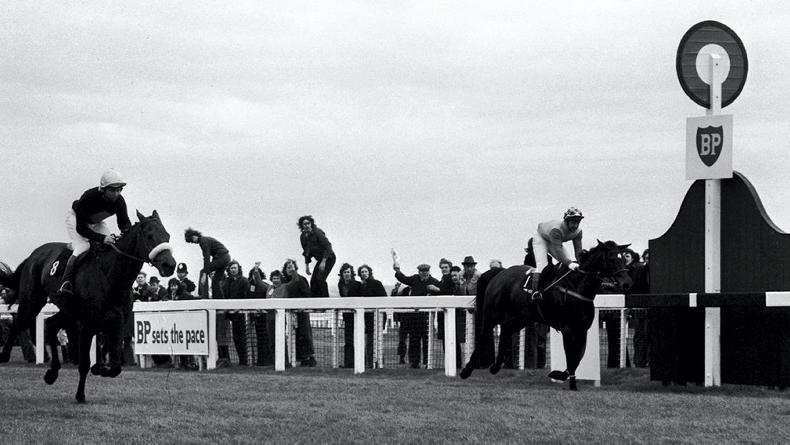
In the 1973 edition, Red Rum and Brian Fletcher broke the hearts of many when catching a floundering Crisp and Richard Pitman in the dying strides of the four-and-a-quarter-mile marathon, in receipt of 23lbs from the gallant runner-up. Owned by Noel le Mare and trained by Ginger McCain, Red Rum and Fletcher won again a year later, beating the Gold Cup winner L’Escargot.
Red Rum was runner-up twice, to L’Escargot (giving 11lbs to the Gold Cup winner) and Rag Trade (giving him 12lbs), and then, at the grand age of 12, he won for a third time in 1977, by a staggering 25 lengths, this time in the hands of Tommy Stack.
How do we gauge the popularity of Red Rum, or his positive influence for racing? Well, more than a decade after his death in October 1995, at the age of 30, a nationwide poll in Britain asked respondents to name a horse they could recall. Some 45% said Red Rum, and he was comfortably ahead of the next two on the list, Anna Sewell’s fictional Black Beauty, and Shergar.
Rossenarra Stud
A son of Quorum, Red Rum, or ‘Rummy’ as he was affectionately known, was bred by Martyn McEnery in Co Kilkenny and sold at Goffs as a yearling in September 1966 from Rossenarra Stud for just 400gns, less than the reserve which was 100gns more. Trained for most of his career on the sand not far from Aintree, his success story almost reads as a fairytale.
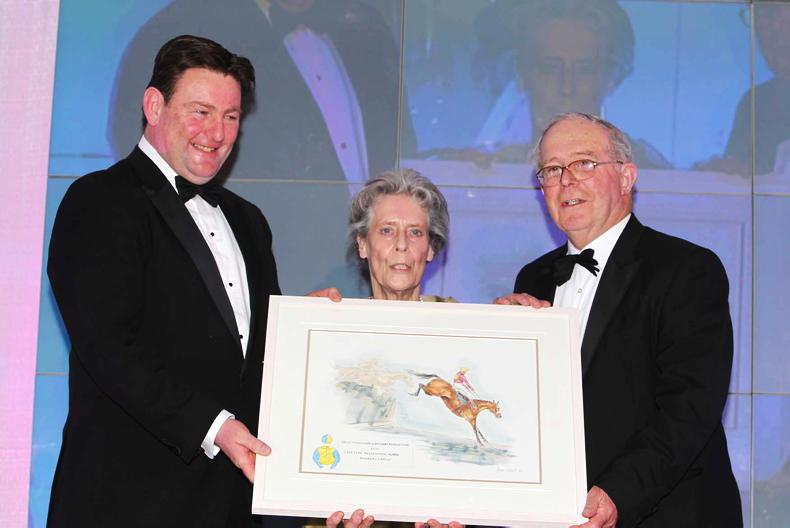
Red Rum’s trainer ran a taxi service and had a car showroom in Southport, while Red Rum’s octogenarian owner got to know McCain as he was a regular user of his taxi. Le Mare paid 6,000gns for Red Rum at Doncaster, through McCain, after the gelding was unplaced in the Scottish National, but his new acquisition quickly hit a winning streak. Such was the improvement Red Rum made that he was joint-favourite for the 1973 Grand National with the top-weight, Crisp.
In 1974, Red Rum’s upward trajectory continued and he was allotted 12 stone, the top-weight, for that year’s running of the Aintree feature. After that success, you might have imagined he would be rested, but Red Rum turned out again that season, this time for the Scottish National, and emerged victorious. He is the only horse to have ever achieved this feat in the same year.
Staying chaser
Bred to be fast, and certainly not a staying chaser, Red Rum actually started his career at Aintree as a two-year-old, dead-heating over five furlongs and running eight times that year. By the time he retired, he had faced the starter 100 times over jumps, and only fallen once. He jumped 150 fences at Aintree and only two horses ever finished in front of him there. Brian Fletcher put this down to the fact that “he was thinking all the way round”.
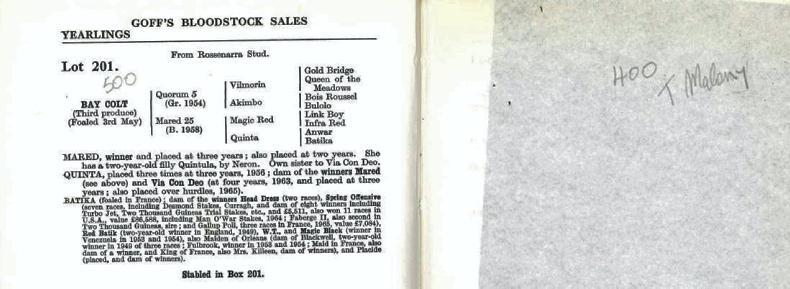
Retirement from racing led to the start of a new career, that of a celebrity. He did everything that one would expect today of a human celebrity – apart from getting out of a car in the glare of photographers’ cameras. He led racecourse parades, opened supermarkets and betting shops, switched on the lights at Blackpool, and appeared on This Is Your Life.
In 2011 Martyn McEnery was presented with a Lifetime Achievement Award by the Irish Thoroughbred Breeders’ Association. He passed away in 2019, aged 88, and Rossenarra Stud is now run by his son, John.
“We still have the stable Red Rum was born in, and every year we get a few letters or emails about him,” John told us this week. “Sometimes visitors to Mount Juliet drop in to show their children where Red Rum was born.”
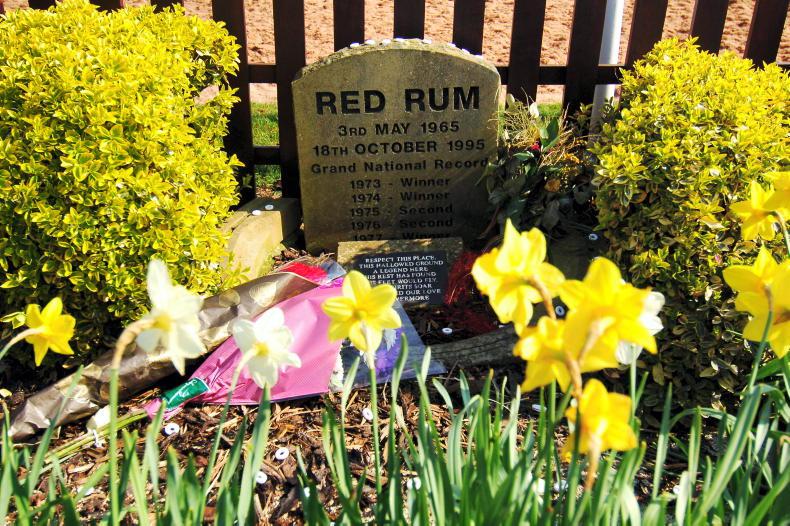
Flat breeding is now the focus at Rossenarra, although John is quick to point out that Red Rum was also bred for the flat. “He won over five furlongs as a juvenile and was ridden by a certain Lester Piggott. Coincidentally, that race was also at Aintree and they dead-heated with another two-year-old bred at Rossenarra.”




 This is a subscriber-only article
This is a subscriber-only article
 It looks like you're browsing in private mode
It looks like you're browsing in private mode











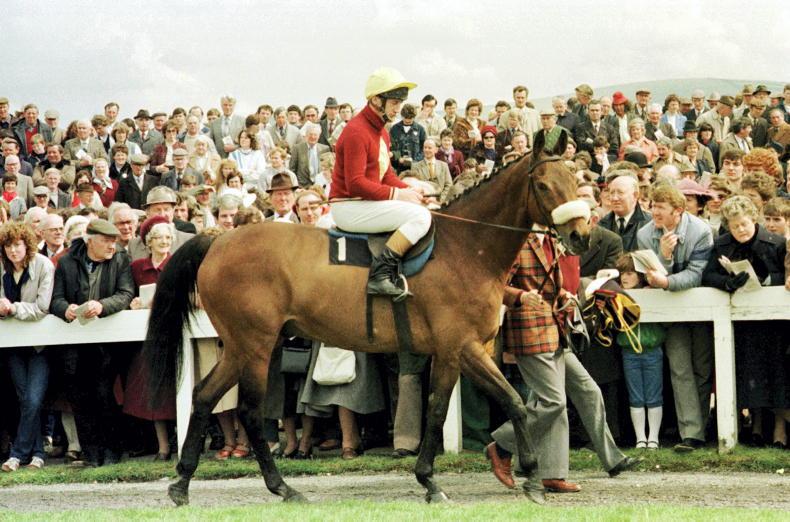

SHARING OPTIONS: